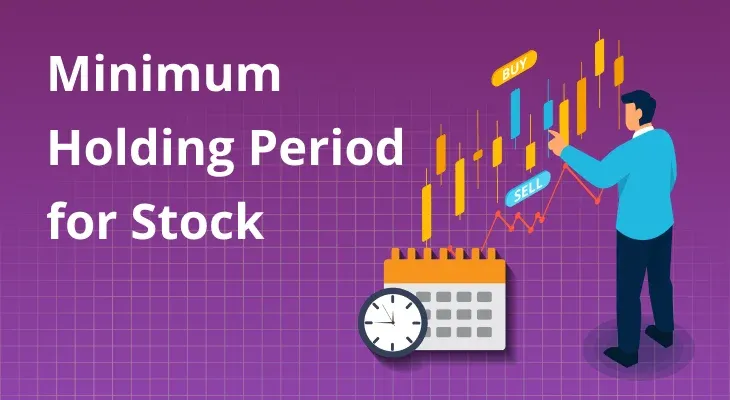
Holding period: Meaning, calculation and forms
A holding period refers to the duration for which you hold the securities in your demat account. It starts from the date you purchase securities until you sell them. So, for instance, if you bought shares of any company on 10th December 2019 and sold them on 10th December 2022, your holding period will be 3 years. But why must you calculate the holding period? The two main objectives of calculating holding period are:
To calculate returns generated by an investment
To determine capital gains tax obligations on your investments
Now that we’ve looked at the definition of holding period, let’s check how to calculate it to determine taxes and returns.
How to calculate holding period return?
Every experienced investor calculates the holding period return to correctly determine the final returns they will receive on the investment.
You can use the following formula to calculate the holding period returns:
Return = ([Income + (EOPV – IV)] /IV) * 100
EOPV = End Of Period Value
IV = Initial Value
It is important to note that the returns are calculated by adding all the income from the investments, including dividends you received from the company.
Understanding capital gains with holding period
The tax on capital gains after selling the shares is determined by whether the asset is held for a short or long term. Capital gain is the profit you earn after selling your assets. Taxation laws consider this profit as "income," and everyone is liable to pay a capital gain tax on this income.
Capital gains are of two types:
Short-term capital gains
Long-term capital gains
For investment in equity, a holding period of a maximum of 12 months is called a short-term position. On the other hand, long-term positions have a holding period of more than 12 months. Profits on sale of stocks are taxed differently depending on whether they are short-term or long-term. For instance, if you earn a profit of ₹10,000 in both short-term and long-term positions, the taxes will vary based on the time period for which you held both the stocks.
In India, the tax on long-term capital gains is 10%, and you will be taxed if your capital gains are above ₹1 lakh. If you held the stocks for more than 12 months, but your returns are less than ₹1 lakh, you will not be taxed.
In the case of a short-term capital gain, the applicable tax is 15% if the Securities Transaction Tax is applicable. And if it is not applicable, then short-term capital gains are taxed as per the applicable income tax slabs.
Furthermore, there are two types of capital gain tax on debt mutual funds:
Short-term capital gain on debt mutual funds
Long-term capital gain on debt mutual funds
Investments held for less than 3 years in debt funds are subject to short-term capital gain. The tax levied in this case is calculated on the investor’s income tax slab rate. On the other hand, long term capital gain tax will be liable if the holding period for this investment is more than 3 years. These earnings are taxed at a rate of 20%, additional surcharges and cess as applicable are liable to be paid.
Apart from taxation and returns, the holding period is also vital to determine whether you are applicable for dividend payments or not. The companies, while announcing dividends, also set a minimum holding period in order to access the dividends. Without fulfilling this criterion, you will not be eligible for your dividends.
Conclusion
The holding period is one of the essential components in stock investing as it helps you compare the returns from different stocks and make a relevant strategy to achieve the highest potential returns. Therefore, without analysing the holding period, you will be losing out on a simple way to make the best investment decisions, which will eventually impact your profits while selling the stocks.
As we understand, time management is crucial. With this understanding, m.Stock enables you to create an account and start trading in under 5 minutes. So create your demat account today!
FAQ
What is a minimum holding period?
Minimum holding period refers to the continuous period of days for which an investor needs to purchase and hold securities. For instance, some equity instruments stipulate a minimum holding period for the investor to be eligible to receive dividends.
What are the short-term and long-term holding periods?
If you sell stocks within 1 year of purchase, it will be considered a short-term position for tax purposes. However, if you hold the stocks for more than 1 year, it will be considered a long-term position. On the other hand, debt mutual funds held for less than 3 years are considered short-term positions, and debt mutual funds held for over 3 years are considered long-term positions.
Can the holding period return be negative?
Yes, holding period return can be negative depending on the final price while selling the stock. For instance, assume that you purchased 10 shares one year ago for ₹2,000 per share. If the current market price is ₹1,000 per share, the holding period return can be calculated as follows:
Return = ([ 0 + (10,000 – 20,000)] /20,000) * 100
Return= (-10,000/20,000) * 100
Return= -50%


